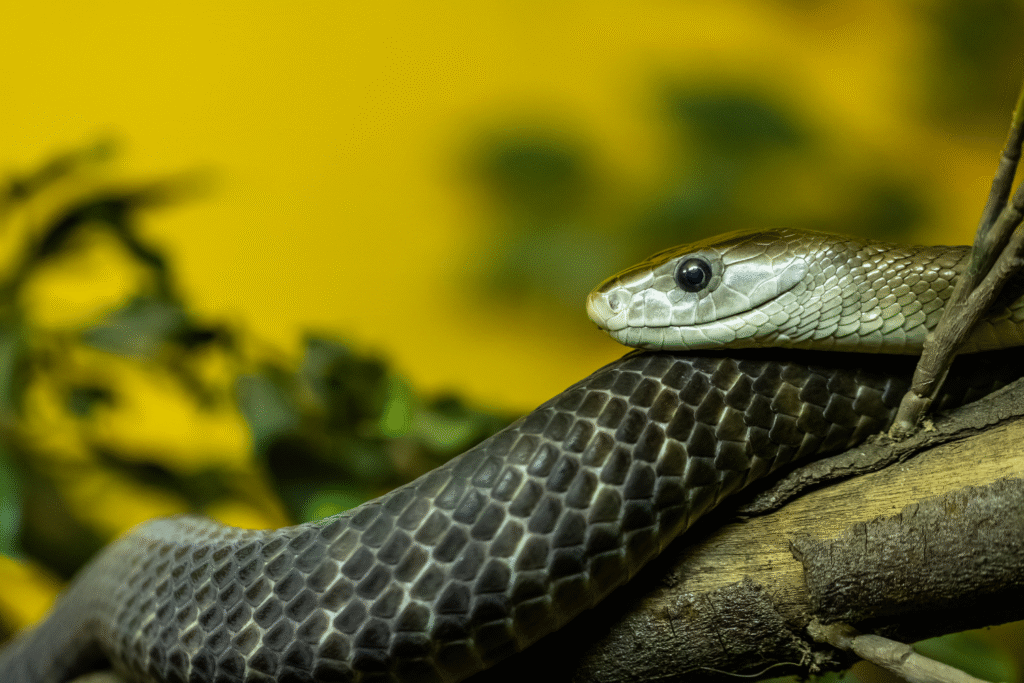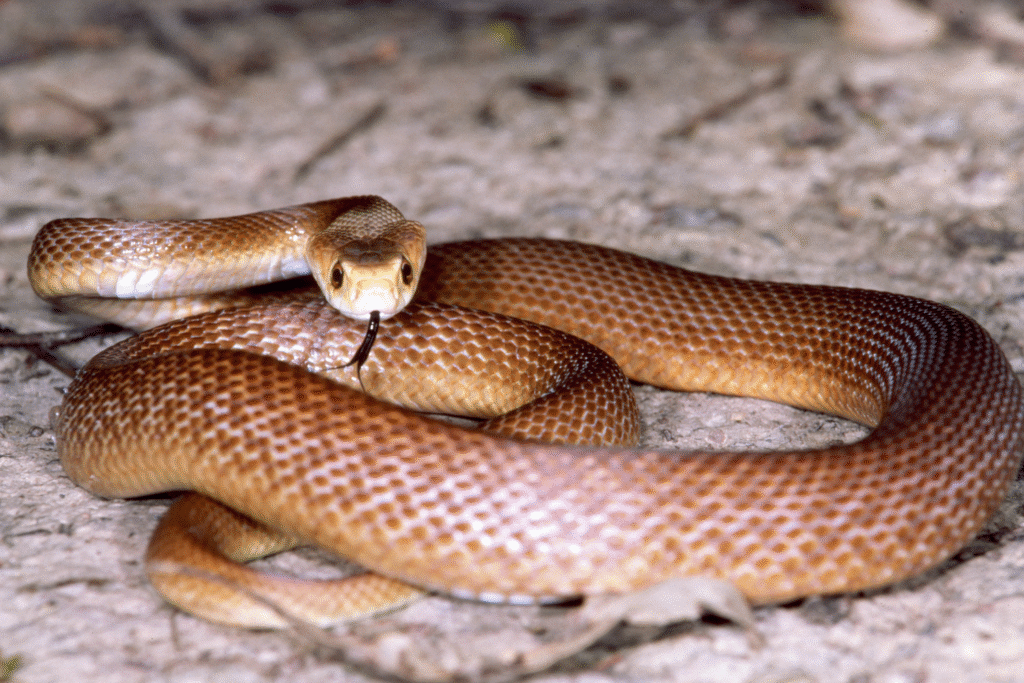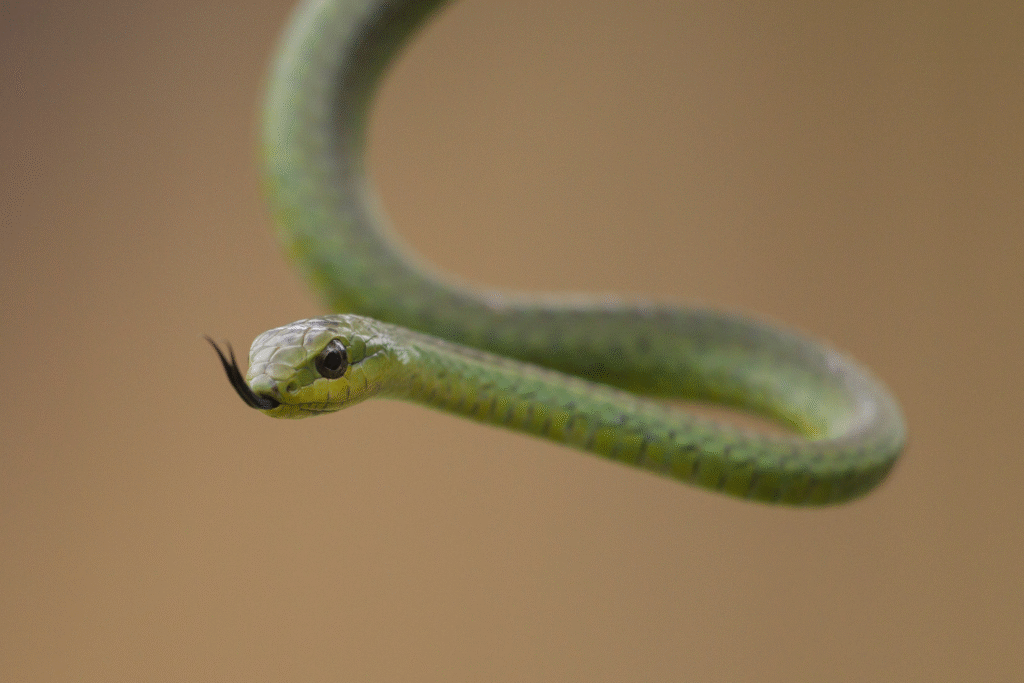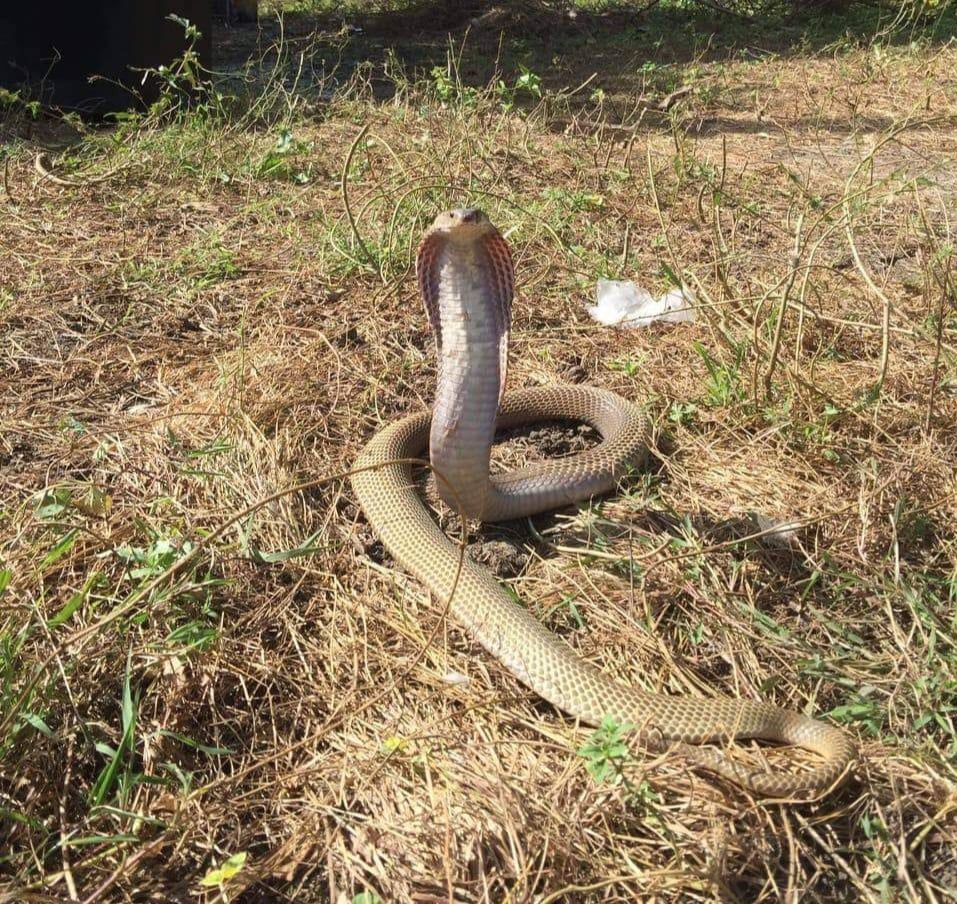Deadly serpents lurk across every corner of the globe.

Snakes have fascinated and terrified humans for centuries, and for good reason. Among the thousands of species slithering across the planet, a small group carries venom, size, or behavior that sets them apart as truly fear-inducing. Some of these snakes can kill an adult human in less than an hour, while others intimidate through sheer size and stealth. What makes them even more unnerving is how widely spread they are, from remote rainforests and tropical islands to backyards in suburban neighborhoods. Scientists continue to track their ranges and venom potency, revealing how these reptiles adapt to changing climates and habitats in ways that often bring them closer to people than ever before.
1. Inland taipan hides in Australia’s dry outback.

The inland taipan, also called the “fierce snake,” holds the title of the world’s most venomous snake. Its bite delivers neurotoxins that can kill multiple humans in a single strike. What’s striking is how rarely people encounter it. This snake prefers remote clay plains of Queensland and South Australia, where human traffic is minimal. Researchers have found that its venom works faster on blood clotting and nerves than any other snake studied, according to the Australian Museum. Despite its reputation, fatalities are rare because it lives far from cities, but the sheer potency of its venom makes it unforgettable.
2. King cobra rises tall in Southeast Asian forests.

Stretching up to 18 feet, the king cobra is not just long but also unnerving in how it behaves. This snake can raise a third of its body upright, meeting a human eye-to-eye while spreading its hood. Its venom targets the nervous system, shutting down vital functions in hours. Fatalities occur more frequently in rural Asia, especially in India and Thailand, where people work close to the snake’s habitat. The cobra’s impressive warning display often deters attacks, yet when it strikes, its venom can deliver enough toxins to kill an elephant, as stated by the World Health Organization.
3. Black mamba races across African savannah landscapes.

Few snakes spark as much fear as the black mamba. Reported by National Geographic, it can reach speeds of up to 12 miles per hour, making it the fastest snake alive. The combination of speed and venom puts it in a class of its own. Its bites can cause death within hours without antivenom, and its habit of striking repeatedly adds to the danger. Found across sub-Saharan Africa, from savannahs to rocky hillsides, the black mamba thrives in areas where people live and farm, increasing the likelihood of encounters. The reputation it carries is well-earned, rooted in both science and experience.
4. Coastal taipan thrives along northern Australia’s shores.

Similar to its inland cousin but found near populated areas, the coastal taipan is a serious risk to humans. It hunts rodents in sugarcane fields, which puts it in direct contact with farm workers. Its venom causes paralysis and internal bleeding, making swift medical treatment essential. While antivenom has drastically reduced fatalities, the potential for disaster remains high where medical access is limited. Its preference for disturbed habitats means it has adapted to human presence, turning farmland into one of its favorite hunting grounds.
5. Russell’s viper stalks villages across South Asia.

This viper is responsible for thousands of bites each year, particularly in India, Sri Lanka, and Bangladesh. Its venom destroys blood cells and causes clotting disorders, leading to kidney failure in severe cases. Unlike snakes that avoid human activity, Russell’s viper is bold and often found near rice paddies and village homes. Farmers are especially at risk when walking barefoot through fields at night. Its distinct hissing sound can serve as a warning, but in areas where people work closely with the land, these snakes remain a constant and deadly presence.
6. Eastern brown snake prowls Australia’s populated regions.

One of the most dangerous snakes for Australians is the eastern brown. It lives across farms, suburbs, and even city edges, making encounters far more common than with the inland taipan. Its venom causes blood clotting problems that can quickly become fatal. What makes it scarier is its aggression when cornered—it will chase and strike with precision. Hospitals in Australia frequently treat bites from this species, making it one of the leading causes of snakebite fatalities in the country. Its ability to thrive in urban areas keeps the risk close to home.
7. Fer-de-lance dominates Central and South American forests.

Known locally as “terciopelo,” the fer-de-lance is notorious for its unpredictable temperament and deadly bite. Found from Mexico through northern South America, it hides in plantations and forests where both farmers and hikers may stumble upon it. Its venom causes massive tissue damage and bleeding. Because it blends so well into leaf litter, people often step on it by accident. In Costa Rica and Honduras, it accounts for a large percentage of snakebite cases, reinforcing its reputation as one of the most feared snakes in the Americas.
8. Boomslang surprises with potent venom in Africa.

This slender, green snake may look harmless compared to heavier vipers, but its venom is among the deadliest. Boomslang venom prevents blood from clotting, causing victims to bleed internally and externally. Symptoms may not appear immediately, which leads to delays in treatment. Native to sub-Saharan Africa, it lives in trees and hunts birds and reptiles. Fatal bites in humans are rare because the boomslang is shy, but when they happen, the consequences are severe. Its quiet presence high in the branches adds to its unsettling mystique.
9. Saw-scaled viper thrives in dry, desert regions.

Small but fierce, the saw-scaled viper causes more deaths than many larger snakes simply because it bites so often. Living in arid parts of Africa, the Middle East, and South Asia, it is well adapted to human environments. Its venom causes internal bleeding, and untreated bites are frequently fatal. The snake’s defensive behavior is easy to spot—it rubs its scales together to produce a rasping sound before striking. Unfortunately, in the sandy environments where it lives, people often come across it by accident at night.
10. Gaboon viper blends into African forest floors.

One of the heaviest vipers, the Gaboon snake is a master of camouflage. Its patterned scales disappear into fallen leaves, allowing it to ambush prey. Found in central and southern African rainforests, it has the longest fangs of any snake, reaching up to two inches. Its venom is a potent mix of toxins that cause tissue destruction and blood clotting. While it is usually calm, its sheer size and ability to deliver massive amounts of venom in a single bite make it a dangerous predator that locals approach with caution.
11. Tiger snake roams wetlands across southern Australia.

This highly venomous snake inhabits swamps, riverbanks, and coastal marshes, often in areas close to human settlements. Its venom contains neurotoxins that can paralyze victims quickly. Tiger snakes are responsible for numerous bites in Australia, particularly in regions where wetlands intersect with farmland. Their striking banded appearance makes them stand out, but their aggressive defense when threatened leaves little room for error. Despite effective antivenom, rural locations still struggle with timely access to treatment, keeping these snakes high on the list of danger.
12. Philippine cobra strikes fast in rice fields.

Native to the Philippines, this cobra has venom that causes respiratory paralysis. Farmers working in rice fields are most at risk, as these snakes thrive in agricultural landscapes. The Philippine cobra is quick to defend itself, often spitting venom with surprising accuracy at perceived threats. While antivenom is available, rural healthcare limitations keep fatality risks high. Its presence across multiple islands makes it a well-known hazard to those living in farming communities, where daily work brings people directly into its territory.
